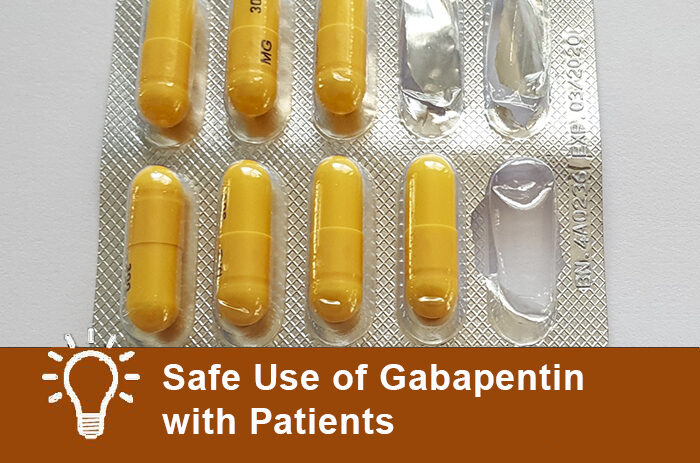Although there’s been a lot of discussion about gabapentin’s abuse potential, gabapentin substance use disorders are pretty rare, with one study finding that only 2% of 44,148 patients using gabapentin alone met criteria for sustained overuse (Peckham et al, Pharmacotherapy, in press). The one area where you should show caution, however, is when patients combine opioids and gabapentin. One study found a 60% increase in the odds of opioid-related deaths in patients co-prescribed opioids with gabapentin (Gomes T, PLoS Med2017;14(10):e1002396).
The bottom line is that you should try to avoid prescribing gabapentin to patients who have current or past opioid use disorder. And if you feel you must prescribe it in these patients, be aware that doses higher than 900 mg daily carry an extra risk for overdose and should be used only with caution.
The Carlat Addiction Treatment Report covered this topic in a recent article, including the following advice for safely prescribing gabapentin for anxiety, insomnia, and alcohol use disorder (AUD):
Subscribers can read the entire article, which also includes information on managing side effects, and the potential for gabapentin withdrawal? Click here.
The bottom line is that you should try to avoid prescribing gabapentin to patients who have current or past opioid use disorder. And if you feel you must prescribe it in these patients, be aware that doses higher than 900 mg daily carry an extra risk for overdose and should be used only with caution.
The Carlat Addiction Treatment Report covered this topic in a recent article, including the following advice for safely prescribing gabapentin for anxiety, insomnia, and alcohol use disorder (AUD):
- When prescribing for anxiety, start with 300 mg at bedtime for one week, then 300 mg twice daily for one week, and then 300 mg 3 times daily thereafter. The 300 mg TID dose is generally when patients are likely to notice a beneficial effect, such as decreased anxiety, though the target dose is 1,200 mg daily (or 400 mg TID) for maximum benefit. If need be, you can increase the dose to 3,600 mg daily, which is the FDA-recommended maximum.
- With anxiety taking many forms, gabapentin is best used for social anxiety, panic disorder, PTSD, and OCD. While it may be used alone for social anxiety and panic disorder, it is often prescribed in addition to an antidepressant for PTSD and OCD (Berlin RK et al, Prim Care Companion CNS Disord 2015;17(5). doi:10.4088).
- For insomnia, gabapentin can be started at 300 mg at bedtime, with weekly titrations of 300 mg and a target dose of 900 mg at bedtime. The key to treating insomnia with gabapentin is to ensure all dosing takes place at bedtime.
- In the case of AUD, gabapentin can be used alone or as an adjunct to medications such as naltrexone, acamprosate, or disulfiram (Soyka M and Müller CA, Expert Opin Pharmacother 2017;18(12):1187–1199). Gabapentin can be started and adjusted just like you would for anxiety, but the target dose for AUD is higher at 1,800 mg daily in 3 divided doses (or 600 mg TID).
Subscribers can read the entire article, which also includes information on managing side effects, and the potential for gabapentin withdrawal? Click here.


_-The-Breakthrough-Antipsychotic-That-Could-Change-Everything.jpg?1729528747)



